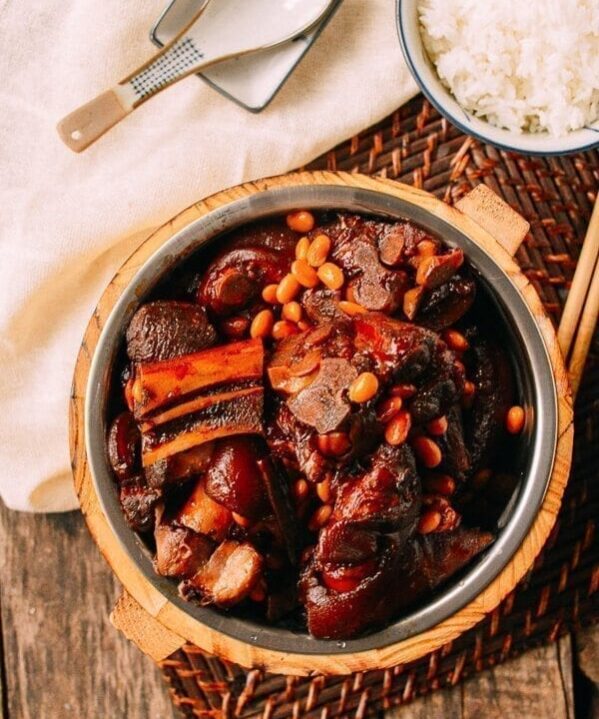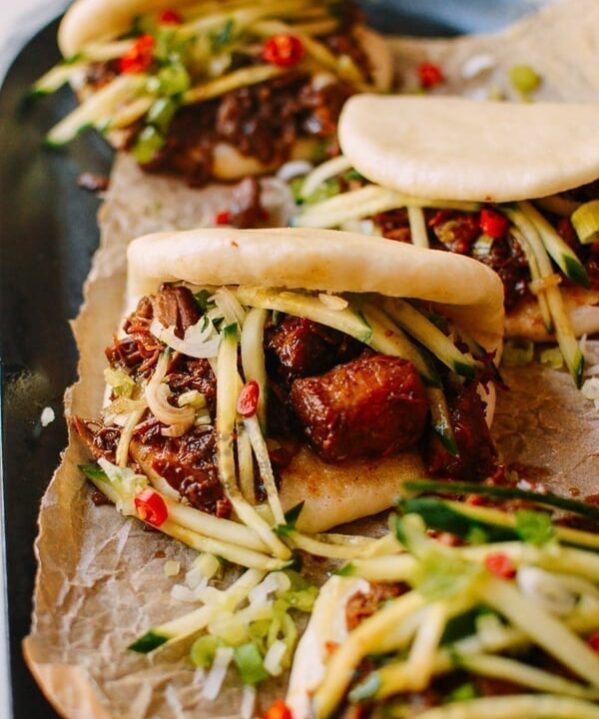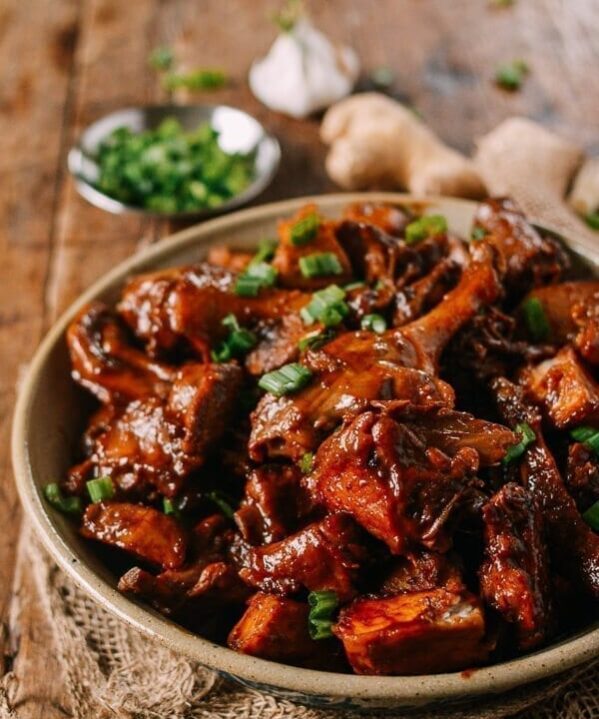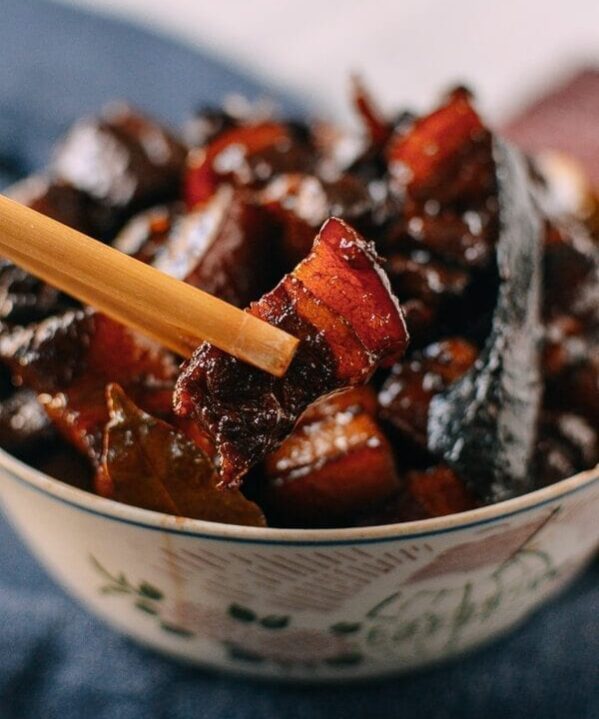This braised pork ribs and taro stew is one of those lesser known comfort food dishes that our family used to make during the colder months. That said, I would have this pork and taro stew for dinner anytime of the year. It’s not only a simple dish to make, we just love taro root. We have a taro cake recipe on the blog already, but this will only be the second taro dish that we add to our archives. We clearly need more of them!
One very important point about this braised pork ribs dish is that you have to use the larger variety of taro, rather than the smaller roots, which are the size of a kiwi or small potato. These smaller taro roots have less flavor and are, well…a bit slimy. Yes, they have a bit of a gooey texture that reminds me of okra; it’s best to avoid them when making this recipe.
The large taro root has a wonderfully flaky texture similar to Yucca, but has a distinct and unique flavor that when coupled with the sauce from the braised pork ribs is as comforting as it gets. You can serve this as one of a few dishes if you’re going family style, or have it as a one-pot stew for dinner and plenty of leftovers for lunch.
If you’re feeling a little bored with your meals, then go out to the market and discover how awesome taro root is!
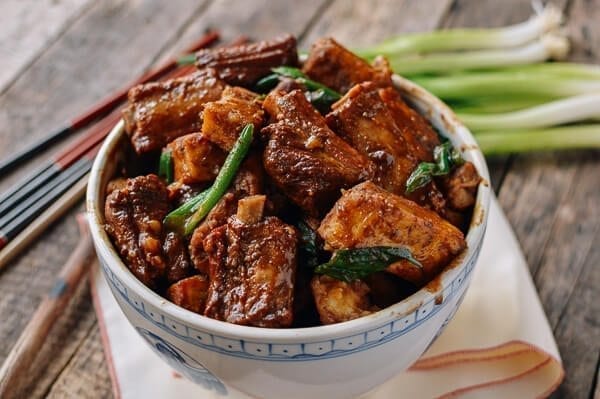
Recipe Instructions
Combine the ribs with the marinade ingredients (shaoxing wine, dark soy sauce, salt, and sugar) and marinate for 20 minutes.
Heat 2 tablespoons of oil in a wok or Dutch oven over medium high heat. Add the smashed ginger (a cleaver is a great tool for smashing!) and sear the ribs for 1 minute on each side until browned.
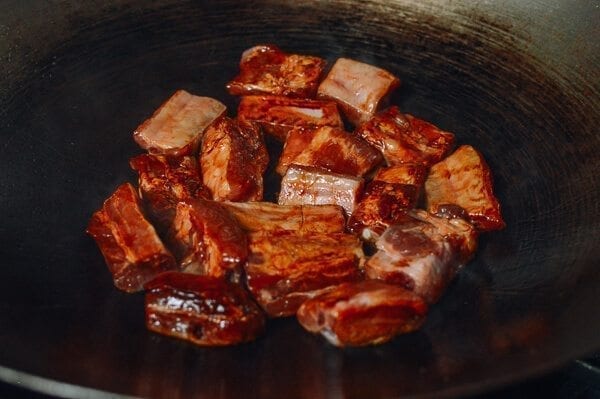
Turn the heat down to medium and add the shallots and garlic.
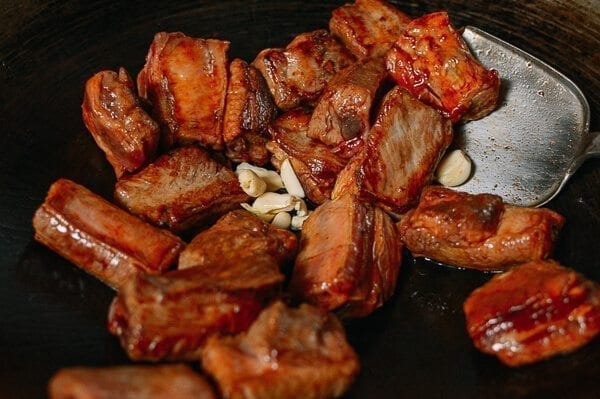
Stir-fry for another minute and add the Shaoxing wine, ground bean sauce, hoisin sauce, soy sauce, salt, five spice powder, white pepper, and sesame oil. Stir-fry the ribs for another minute.
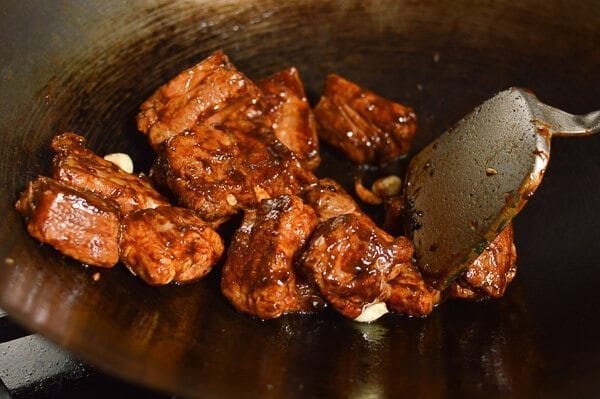
Add the low sodium chicken stock, bring to a boil, and adjust the heat to a slow simmer.
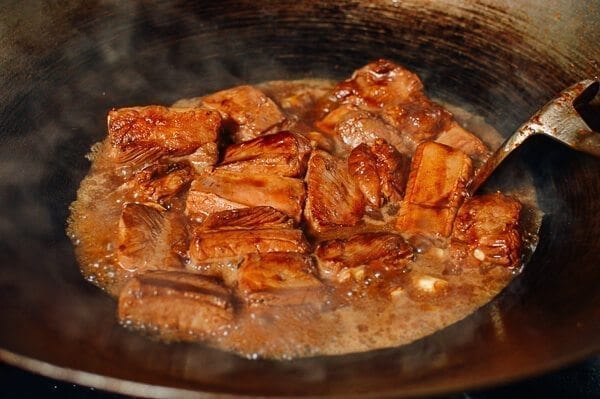
Cover and cook for 45 minutes, checking and stirring the mixture every 10 minutes. The ribs should be submerged in the liquid at the beginning and the sauce should reduce slightly but the braised pork ribs should still look a little soupy at the end of the 45 minutes so add more water or chicken stock if needed.
While the ribs are cooking, heat ½ cup vegetable oil to 300 degrees F in a wok or cast iron pan and add the taro root pieces, spreading them out so there is a single layer.
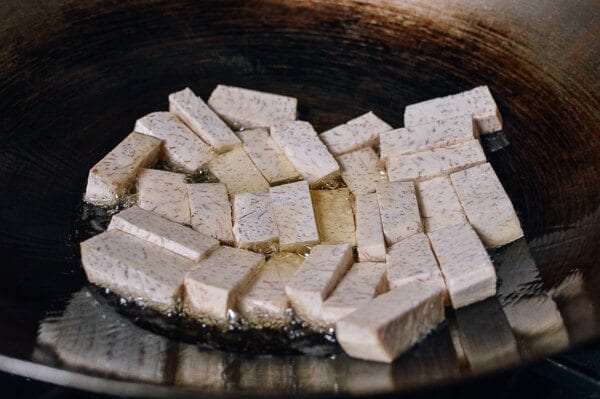
Fry on each side until they just start to turn brown and have a slight crust on them, about a minute on each side.
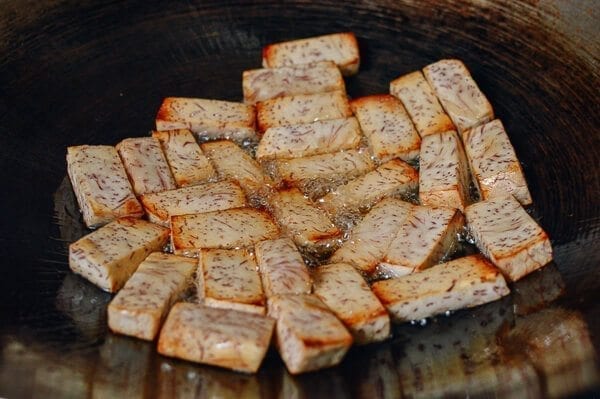
Drain the excess oil and toss the taro with a large pinch of salt. This process give the taro a light crust and prevents it from becoming mushy after cooking with the ribs.
Once the ribs have been simmering for 45 minutes, they should be tender. There should be quite a bit of standing liquid remaining. Add the taro, and gently fold the mixture together to coat the taro pieces with liquid.
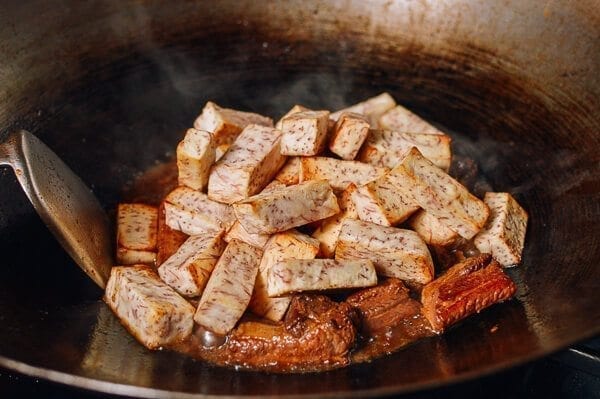
Let cook for another 15 minutes, giving everything a gentle stir every 2-3 minutes. If the liquid dries up completely, add another cup of water or chicken stock (the taro will absorb it).
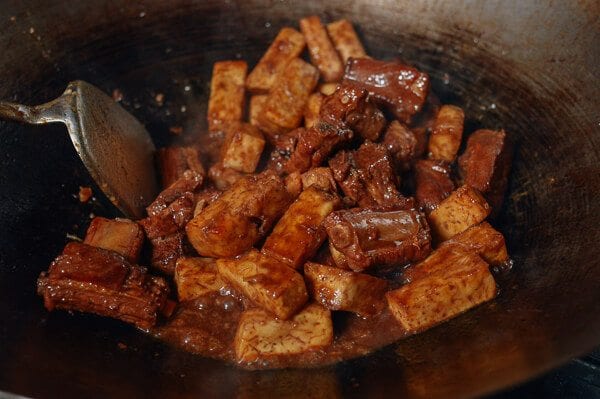
Try a piece of taro and check for doneness. It should be flaky and cooked through. Cook longer if you want the taro softer. Stir in the scallions and plate!
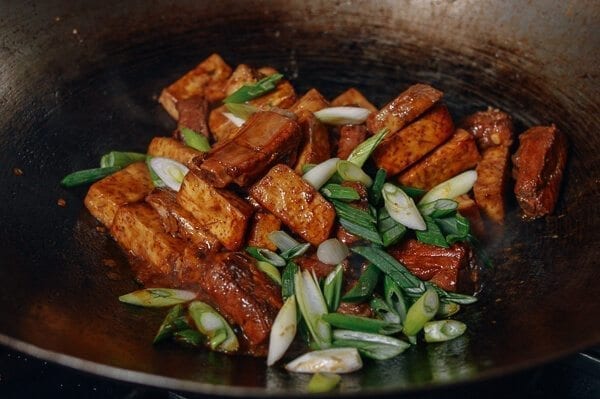
Serve this braised pork ribs and taro stew with plenty of steamed white rice!
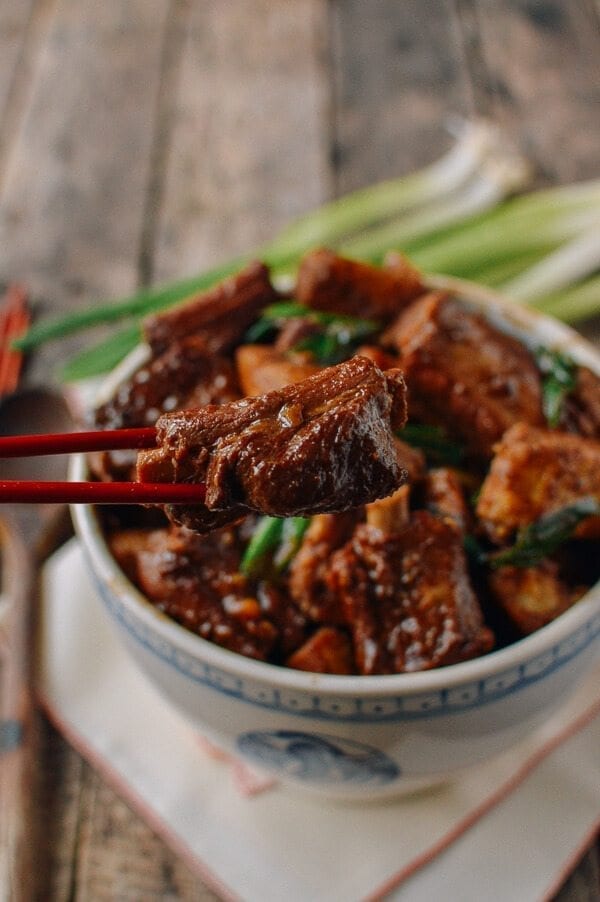
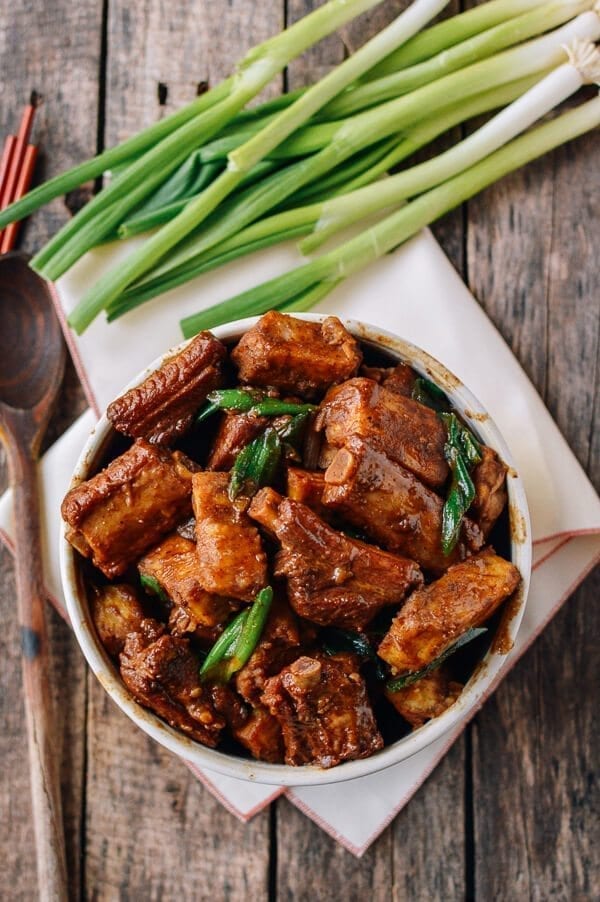
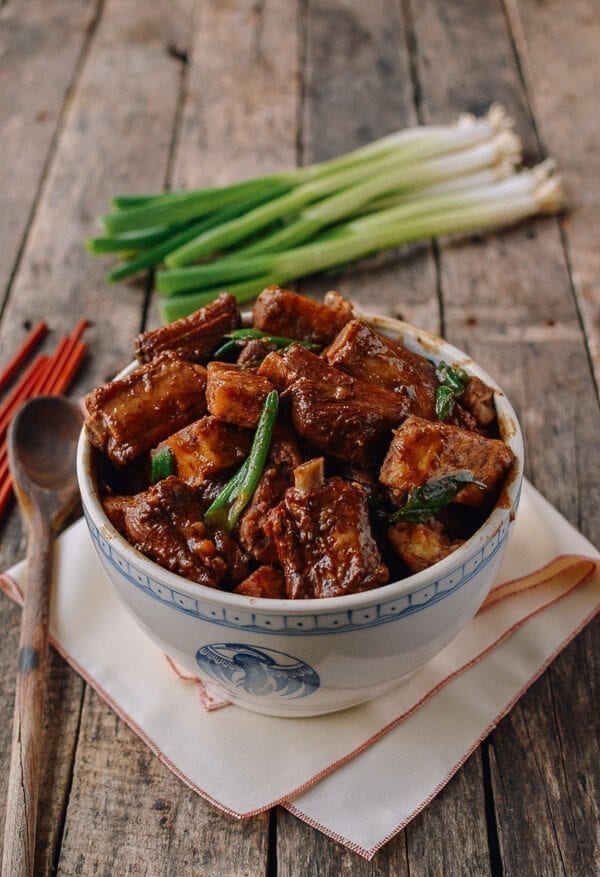
Braised Pork Ribs with Taro
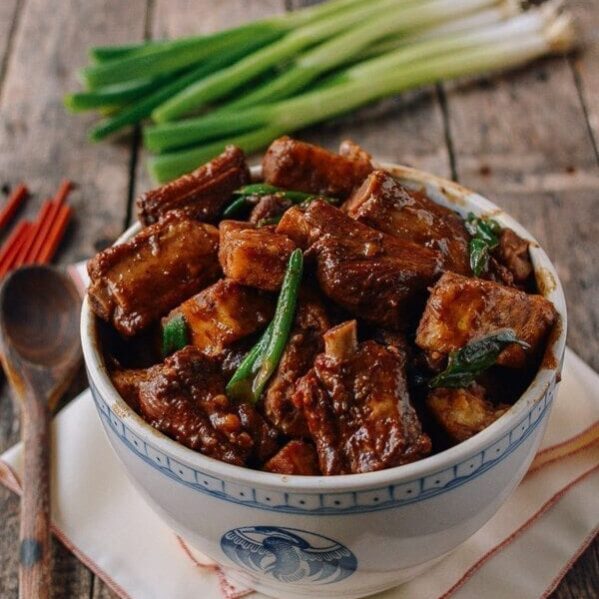
Ingredients
To marinate the pork ribs:
- 3 pounds pork ribs (cut into 2- to 3-inch/5-7cm pieces)
- 1 tablespoon shaoxing wine
- ½ teaspoon dark soy sauce
- 1/2 teaspoon salt
- ¼ teaspoon sugar
For the rest of the dish:
- 2 tablespoons vegetable oil plus ½ cup/120 ml
- 1 slice ginger (smashed with a cleaver)
- ¼ cup shallots (minced)
- 6 cloves garlic (smashed lightly)
- 1 tablespoon Shaoxing wine
- 2 tablespoons ground bean sauce
- 2 teaspoons hoisin sauce
- 1 teaspoon soy sauce
- 1/2 teaspoon salt
- 1/8 teaspoon five spice powder
- ¼ teaspoon ground white pepper
- ½ teaspoon sesame oil
- 4 cups low sodium chicken stock
- 2 pounds large taro root (cut into 2- to 3-inch/5-7cm pieces)
- 2 scallions (cut into 2-inch/5cm pieces)
Instructions
- Combine the ribs with the marinade ingredients and marinate for 20 minutes. Heat 2 tablespoons of oil in a wok or Dutch oven over medium high heat. Add the smashed ginger and sear the ribs for 1 minute on each side until browned.
- Turn the heat down to medium and add the shallots and garlic. Stir-fry for another minute and add the Shaoxing wine, ground bean sauce, hoisin sauce, soy sauce, salt, five spice powder, white pepper, and sesame oil. Stir-fry the ribs for another minute.
- Add the chicken stock, bring to a boil, and adjust the heat to a slow simmer. Cover and cook for 45 minutes, checking and stirring the mixture every 10 minutes. The ribs should be submerged in the liquid at the beginning and the sauce should reduce slightly but the braised pork ribs should still look a little soupy at the end of the 45 minutes so add more water or chicken stock if needed.
- While the ribs are cooking, heat ½ cup vegetable oil to 300 degrees F in a wok or cast iron pan and add the taro, spreading the pieces out so there is a single layer. Fry on each side until they just start to turn brown and have a slight crust on them, about a minute on each side. Drain the excess oil and toss the taro with a large pinch of salt. This process give the taro a light crust and prevents it from becoming mushy after cooking with the ribs.
- Once the ribs have been simmering for 45 minutes, they should be tender. There should be quite a bit of standing liquid remaining. Add the taro, and gently fold the mixture together to coat the taro pieces with liquid. Let cook for another 15 minutes, giving everything a gentle stir every 2-3 minutes. If the liquid dries up completely, add another cup of water or chicken stock (the taro will absorb it).
- Try a piece of taro and check for doneness. It should be flaky and cooked through. Cook longer if you want the taro softer. Stir in the scallions and serve.
